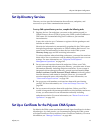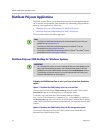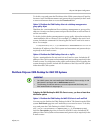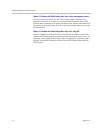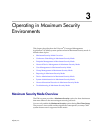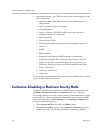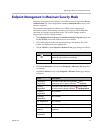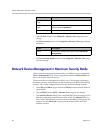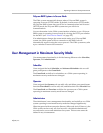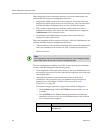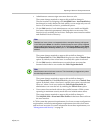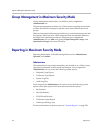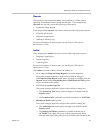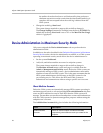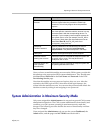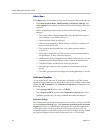
Operating in Maximum Security Environments
Polycom, Inc. 21
Polycom RMX Systems in Secure Mode
The CMA system automatically detects when a Polycom RMX system is
operating in secure (HTTPS) mode. By default, in non-secure (HTTP) mode,
the Polycom RMX system uses port 80 for its communications and in secure
(HTTPS) mode, the Polycom RMX system uses port 443 for its
communications.
You can determine via the CMA system interface whether or not a Polycom
RMX system is operating in secure mode by viewing the HTTP port number
for the MCU (see “View Device Details” on page 227).
If an administrator changes the secure mode setting on a Polycom RMX
system, the CMA system will lose connection to the RMX, but will
automatically regain it using the correct protocol. The CMA system may take
up to a minute to restore the connection.
User Management in Maximum Security Mode
User management functionality is divided among different roles: Scheduler,
Operator, and Administrator.
Scheduler
Users assigned the basic Scheduler and Advanced Scheduler role can add
guest participants to the Guest Book.
The Guest Book workflow for schedulers on a CMA system operating in
maximum security mode has not changed.
Operator
Users assigned the Operator role can add, edit, and delete guest participants
from the Guest Book as well as add, edit, and delete their own Favorites lists.
The Guest Book and Favorites workflow for operators on a CMA system
operating in maximum security mode has not changed.
Administrator
The administrator’s user management functionality and workflow on a CMA
system operating in maximum security mode has changed significantly.
When integrated with an enterprise directory (Microsoft Active Directory), the
CMA system can have only one local account—the default administrator
account used to access and administer the system. This account cannot be
deleted in any circumstances.



